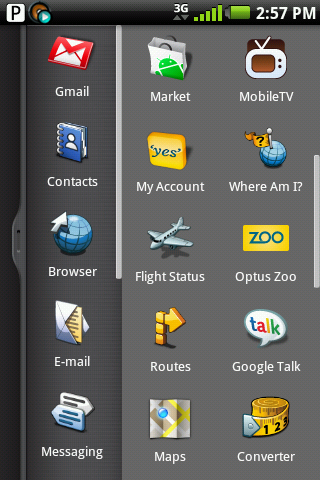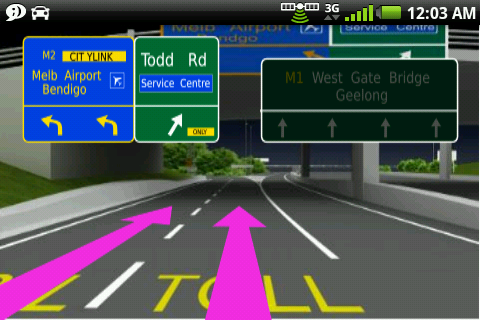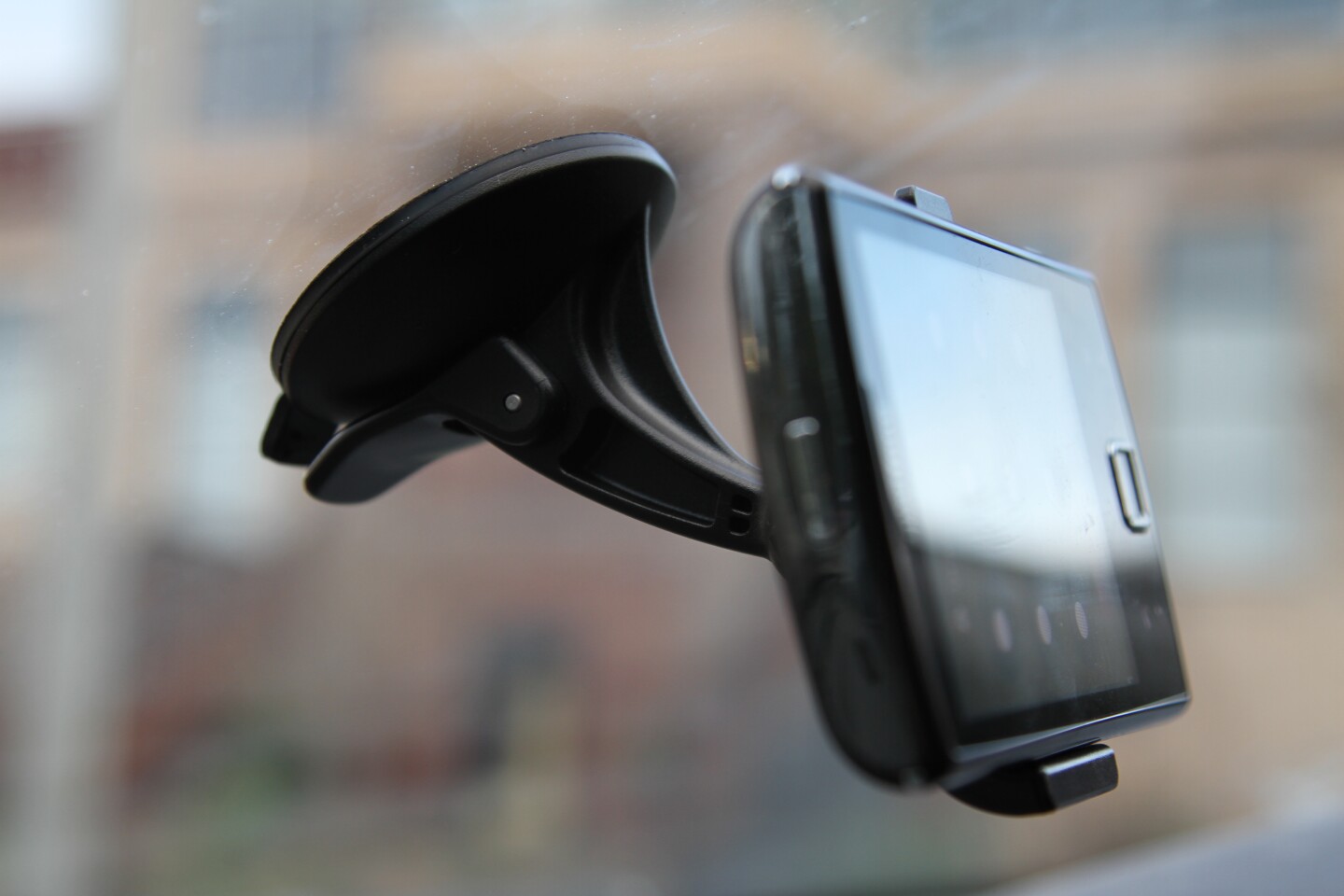Forget mobile device convergence, that's old news. Every smartphone on the market now handles everything from camera and calendar duties to gaming, GPS navigation, web browsing and social media. Differentiation is looking like the name of the game moving forward – offering do-it-all devices that distinguish themselves through a particular focus. Take Sony's reportedly upcoming PSP phone, which takes an Android 3.0 platform and mates it with a dedicated PSP gaming experience. Or this, the Garmin-Asus nüvifone A50, a fully-featured Android smartphone that comes pre-packaged with a car kit and built-in Garmin map data so it can shine as an in-car GPS navigation system. I've spent several weeks using the A50 as my primary phone, and if you spend a lot of time on the road, this new nüvifone is built for you and does a very credible job.
US-based GPS specialists Garmin and Taiwanese electronics giant Asus have teamed up to produce a range of navigation-centric smartphones – and we've just spent a few weeks with the alliance's new flagship: the nüvifone A50. The A50 features a 3.5" capacitive touchscreen, a pre-loaded set of Garmin map data and a custom-tailored version of Android 1.6 that puts navigation front and center in the user interface.
You can understand Garmin wanting to get into the mobile phone handset market – smartphones are voraciously gobbling up entire sectors of mobile electronics. Now that every smartphone comes packaged with a GPS and compass, GPS companies have to take notice – get on the front foot or risk losing their relevance in the mass market.
Competitors like TomTom and Sygic have packaged their navigation software up in some fairly pricey iPhone apps – with a fair degree of success. Mobile giant Nokia announced earlier this year that all Nokia smartphones will get free turn-by-turn navigation bundled in. Perhaps the biggest looming specter for GPS-centric companies like Garmin has to be Google Maps, which is slowly starting to roll out a turn-by-turn navigation system on Android 2+ that's backed by vast data, mapping, satellite, search and street view capabilities that no GPS company can realistically hope to match.
The Google Maps Navigation solution is entirely cloud-based, though. So while it's immediate and constantly updated, it'll be slow or even completely accessible if you drive through an area with poor data coverage. And even in the city, this "free" solution could turn out to be costly, as pretty much everything, especially the more advanced features, will be taking chunks out of your data plan.
So the Garmin-Asus alliance makes quite a lot of sense – and after spending a few weeks with the nüvifone A50, the idea of a smartphone that's designed around its navigation capabilities makes a lot of sense too.

Nüvifone A50 - the basics
The A50 is an attractive and compact handset. It features a 3.5", 320x480 capacitive multi-touch screen, A Qualcomm 600MHz processor, Wi-Fi, GPS, 4GB of internal Flash storage and 256MB of RAM. Storage can be expanded to 32GB with a MicroSD card.

It runs on Android 1.6, overlaid with a custom Breeze interface designed specifically for the nüvifone. The bulk interface changes here will make the A50 very difficult to upgrade – so don't expect to be loading it with Android 2.2 in the next 12 months – but the custom skin is integral to the character and intention of the handset. From your first visit to the home screen it's obvious that navigation is going to be a key feature.

With email, messaging and camera functions relegated to the sliding app 'drawer' at the side of the screen, two of the home screen's three main buttons are dedicated to navigation. View Map takes you straight into the mapping screen – and is as such not all that useful. Where To? is a collection of quick-find apps dedicated to getting a location into the GPS software as easily as possible.
Under Where To? you can access your recently found locations, search the enormous Garmin 'Points of Interest' repository that's preloaded on your phone, enter an address directly, check the nearest petrol prices, find a restaurant nearby or browse geotagged photos on Panoramio. Along with the preloaded Points of Interest, you can also do a local Internet search, in our case one provided through the Optus network, to find your way to things that aren't in the Garmin repository.

Sliding the app drawer out reveals another large sliding drawer where you'll find the Android Market and a bunch of preloaded apps like Facebook, Twitter, the rudimentary Music player, Google Maps, Voice Search – and a few others pre-loaded by Optus that can unfortunately not be deleted.

The A50's touch screen is lovely and bright, but it isn't the most responsive in the world, and typing on the generic on-screen Android keyboard can be frustrating, even if you're used to the occasional vagaries of an iPhone – and the automatic spell correction is frequently way off the mark. The processor can lag a little too, so you occasionally need to press buttons two or three times before they register. Haptic feedback is handy when this happens – if there's no buzz, your touch hasn't registered. It's not a huge issue, but it's certainly something that could be tightened up.
As well as the touch screen, there's four smart keys – home, settings, back and a phone key – as well as a four-way thumbstick control, a select button, volume switches, a power button and a camera button. I found the power button way too easy to press – you tend to hit it accidentally in the middle of things and put the phone to sleep. A minor concern.
The onboard camera is a 3-megapixel with autofocus. It's a bit slow and clunky, but functional enough – here's a sample photo:

Things get a bit blurry in low light or with the zoom activated – it's a fairly average cameraphone in this regard.

The camera also takes MPEG4 video, which is again more or less of a typical cameraphone standard and not a highlight of the A50.
The A50 makes great, clear phone calls, it has a nice loud speaker for playing music or using the speakerphone, and it gets a full day's battery life when you're not hammering it. The worst battery life I saw was in the first couple of days, when I spent a few hours playing with it at a time, downloading apps and playing with the camera. In constant heavy usage, you're looking at just a few hours before the battery dies – luckily it charges with a reasonably common Mini USB cable.

The handset also features 802.11b/g wireless networking – although my review unit didn't seem to want to connect to my home Wi-Fi network. It worked with several other networks without issue, and our Garmin rep was unaware of anyone else experiencing a similar problem, so perhaps this is a one-off problem?

Navigating with the Nüvifone A50
Where the A50 shines, and indeed where you'd expect it to, is on the road. It comes out of the box with a simple car kit – a great idea that I hope we see more of – and the car kit, like the rest of the navigation features, is tied in to the user interface in ways that make the Nüvifone seem like more than the sum of its parts.

For example, when you pull the A50 out of its cradle, it assumes you have parked at your destination – and it automatically saves a GPS waypoint for your parked car, which it quietly deletes next time you put it back in the cradle. You may never have to use it, but it's a great touch.
Searching for destinations is quick and easy, whether through the Garmin Points of Interest database or using the Optus local search to hit the internet. Once you have your address, you simply hit Go and you're using the familiar Garmin navigation interface, complete with clear turn-by-turn voice cues and 3D visual representations of upcoming intersections and freeway exits.

The A50 dims itself down and even appears to go to sleep on longer sections of road, then pops back up when it's got something to tell you, so it keeps out of the way when you're on the highway.

While in the car kit, any calls that come through are automatically answered in speakerphone mode – and while you're talking, you don't get your audio navigation cues. Instead, you have to rely on the screen. So the driver's attention is split between the road, the conversation and looking at the screen for directions… I guess it's hard to think of a better way to go about it.
The nav system also works fairly well while other apps are running; I like to drive with a podcast streaming away, for example – and the Nüvifone simply dims the volume on the .PodKast. or Music apps to play its turn by turn instructions. Naturally you can turn the voice cues off if you don't want your music or podcasts interrupted. Operating with other apps running can get a little glitchy at times, but this is the price of true multitasking – and in general, even when third-party apps are straining under a processing load, the voice navigation cues still come through clear as a bell.
Navigation is also built in to other areas of the phone - your photos and videos, for example, are geotagged. Opening the Weather app automatically checks your GPS location to bring you locally relevant information. And if somebody sends you a text message with an address in it, it comes up as a link so you can navigate straight there… although it seems the location has to be in a pretty specific format for that particular feature to work.
The A50 comes with preloaded map data for the region it's sold in – including millions of points of interest that cover petrol stations, ATMs, restaurants, bars, airports, train stations and all sorts of other things. Each handset also receives an update subscription – which would cost in the order of AU$100 (approx. US$89) if you were buying updates for a standalone Garmin nav system. If you travel with the Nüvifone, you can expect to pay between AU$60 and AU$180 (approx. US$53 – $160) to load the phone with maps for other regions - or you can just fall back on the data-centric Google Maps app if you're going to have access to your data plan all along the way.
Conclusions
The Garmin-Asus Nüvifone A50 is expected to go on sale in Australia at a similar price point to the 8GB iPhone 3GS and the Samsung Galaxy S i9000, when purchased as part of a 24-month plan.
While it lacks the polish of the Apple and Samsung phones, it's a solid Android phone and its navigation capabilities are fantastic. To load an iPhone up with anywhere near this sort of mapping software, you're talking AU$70-100 (approx. US$62 – $89) worth of TomTom or similar applications – and even then, you won't have true multitasking ability, the car kit or the sense you get with the A50 that the device was built for the job.
If navigation is a key part of what you want a smartphone for, the Nüvifone A50 straddles the gap between a dashboard GPS and a mobile phone like nothing else on the market. It's a solid phone, and it handles browsing, games, email, music and messaging competently without being outstanding. At the end of the day it's a functional and enjoyable handset to use, and I'm in no great rush to go back to my regular iPhone.
Click through for more information about the Garmin-Asus Nüvifone A50.
























